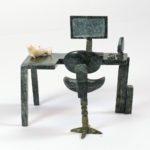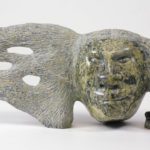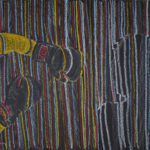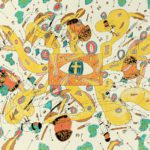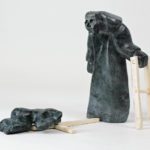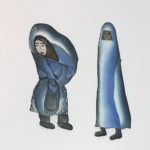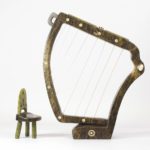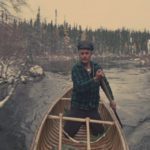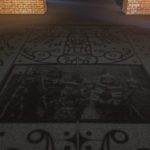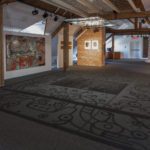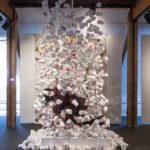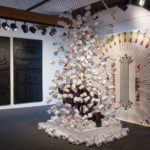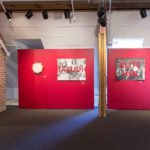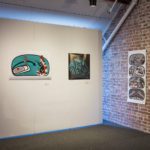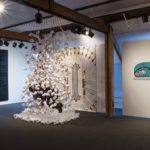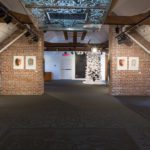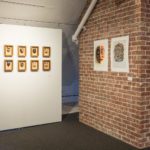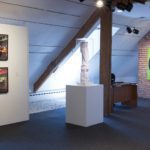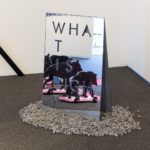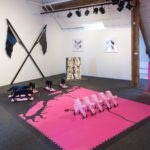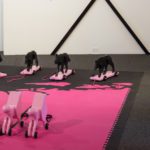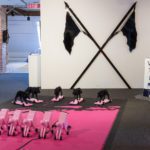Contemporary Native Art Biennial, 3rd edition
Culture Shift – Une révolution culturelle
Guest curator: Michael Patten
Art Mûr
CENTRAL PAVILION
April 30 – June 18, 2016
Opening reception: Saturday, April 30th from 3-5pm
KC Adams (Métis), Joi T. Arcand (Muskeg Lake Cree), Naomi Bebo (Ho-Chunk, Menominee), Lance Belanger (Maliseet) & Kitty Mykka, Edgar Heap of Birds (Cheyenne, Arapaho), Ludovic Boney (Huron-Wendat), Bruno Canadien (Dene), Ruth Cuthand (Plains Cree), Wally Dion (Saulteaux), Melissa General (Oneida, Mohawk), Dyani White Hawk (Sicangu Lakota), Richard Heikkila-Sawan (Cree, Mohawk) Luzene Hill (Eastern Band of Cherokee), Maria Hupfield (Wasauksing), Brad Isaacs (Mohawk), Jeff Kahm (Plains Cree), Neon Kohkom, Bev Koski (Anishnabekwe), Jason Lujan (Chiricahua Apache), Amy Malbeuf (Métis), Caroline Monnet (Algonquin), Nadia Myre (Algonquin), Sarah Sense (Chitimacha, Choctaw), Duane Slick (Meskwaki), Rolande Souliere (Michipicoten), Marie Watt (Haudenosaunee), Nico Williams (Ojibwe).
Text by Michael Patten
On December 15th, 2015, after close to 72 months, Canada’s Truth and Reconciliation Commission – one created to lay the foundation of reconciliation between Canada and its Indigenous Peoples – finally released a nearly 4,000-page report. The document includes many testimonies as well as 94 Calls to Action, most of which are directed to the federal, provincial, territorial governments and their agencies. The recent publication of the report and its easy access online offer an ideal opportunity for (self) reflection on what it means to carry Canada’s colonial history as citizens of both Indigenous and settler ancestries. We are at a crossroad and how we decide to move forward will have a tremendous impact on the kind of relationship Canada decides to have with the First Nations of North America.
The Contemporary Native Art Biennial participates in the exercise of reconciliation through its mandate, which is to introduce the variety of art practices stemming from Indigenous cultures of North America to an ever-wider audience of Indigenous and Non-Indigenous peoples. It seeks to become a highly visible platform for the promotion of the messages, stories and ideas that creative Indigenous peoples bring into the world.
The works brought together for Cultural Shift – une révolution culturelle testify to native culture‘s rich heritage and the variety of ways in which traditional techniques, motifs and subject matters continue to assert new possibilities for Indigenous artists. Some of the participants in this exhibition are perverting the codes of institutionalized art as a means to critique the almost anthropological status of native art. Alison Bremner recuperates some of greatest art canons that she “indigenizes” with striking Tlingit masks. The result of her hybrid images attest to the position of Indigenous women as the object of a dual Male and Colonial Gaze. Likewise, Sonny Assu subverts pastoral landscapes that romanticize the indigenous experience with menacing “alien” formline art motifs. His work achieves a reclaiming of the imagery associated with Northwest Coast art. Reminiscing graffiti on a wall, these added motifs divert the message of the original image and destabilize the myth that it tries to convey. Jeff Kahm deploys a more subtle strategy that blends recurring Indigenous motifs such as stripes and geometric shapes with Modernist aesthetics associated with color field painting and geometric abstraction. For Kahm, the result of this fusion explores “the confluence of time and culture at a metaphorical level and one that resonates universally.”
Many of the projects included in the exhibition aspire to reassert Indigenous identity within contemporaneity while acknowledging the consequences of colonialism on aboriginal people. Some works address the difficult affirmation of an indigenous identity following decades of forced assimilation in the context of North America’s complex colonial history. Luke Parnell, the artist in residence at the Stewart Hall Art Gallery address issues of rights, ownership and privilege in works that transposes the traditional design of Haida art (such as totems) into works rooted in the narrative of the colonial history of North Western British Columbia, where he originates.
The scholar, artist and former participant of the Biennial of Contemporary Native Art, David Garneau, wrote that cultural decolonization is the desire for “First Nations, Inuit, and Métis people [to become] themselves neither through forced assimilation into non-Indigenous modes, nor by retreating to a reconstructed, anachronistic Indigenous cultural purity, but by struggling to make new ways of being Indigenous within the complex of the contemporary negotiations of Aboriginal/settler/international Indigenous identities.” I believe that through their work, many artists included in my selection are participating to this same project and testing different suggestions. What they’ve created partakes in a cultural revolution.
According to Garneau, there is also a “radical desire [that] Canadians and their institutions will Indigenize…Cultural decolonization in the Canadian context is about at once unsettling settlers and, ironically, helping them to adapt to better settle themselves as non-colonial persons within Indigenous spaces.” The Biennial of Contemporary Native Art is also about the promotion of indigenous ideologies and ways of understanding the world that carry a potential for all citizens of North America. It is a cultural shift that takes place on the side of settlers as well. It wants to see them open up to their indigenous neighbours and recognize how their culture can influence a society that can be more egalitarian and compassionate. Melissa General’s photographs of her land with patterns lines of the hand-sewn garments her mother used to fabricate her as a child allows to consider this. Her work functions as an invitation to establish a new kind of relationship to our environment, one that is not driven by claims of ownership, but rather by gratitude and respect.
If the Federal government of Justin Trudeau follows through with the many recommendations made in the TRC Report and in the United Nations Declaration on the Rights of Indigenous Peoples cited repeatedly in the document, the cultural shift that is currently taking place nation-wide will involve the whole population of Canada and could have repercussions on how things will move forward South of our border. The exhibition documents this shift taking place in Canadian society and testifies to the aspiration of a future where Indigenous and Non-Indigenous peoples cohabit in peace, with consideration and appreciation for each other.
1. Truth and Reconciliation Commission of Canada. Truth & Reconciliation Commission Report, available online http://www.trc.ca/websites/trcinstitution/File/2015/Honouring_the_Truth_Reconciling_for_the_Future_July_23_2015.pdf (2015): 8.
2. Jeff Kahm. Statement. Artist Website. http://www.jeffkahm.com/#!statement/c1w19
3. David Garneau, “Extra-Rational Aesthetic Action and Cultural Decolonization,” FUSE Magazine, vol. 36 no. 4 (2013): 15-16.
4. ibid.
Stewart Hall Art Gallery
WEST COAST PAVILION
April 30 – June 26, 2016
Opening reception: Sunday, May 1st from 2-5pm
Contemporary Native Art Biennial, 3rd edition
Culture Shift – Une révolution culturelle
Guest curators: Michael Patten, Joyce Millar
Artist in residence: Luke Parnell (Haida, Nisga’a)
Sonny Assu (Kwakwaka’wakw), Mary Anne Barkhouse (Kwakiutl), Alison Bremner (Tlingit), Corey Bulpitt (Haida), Rande Cook (Kwakwaka’wakw), Bracken Hanuse Corlett (Wuikinuxv, Klahoose), Andrew Dexel (Nlakapamux), Dean Drever (Haida), Nicholas Galanin (Tlingit, Aleut), Marianne Nicolson (Kwakwaka’wakw), Jeneen Frei Njootli (Vuntut Gwitchin), Tsēma Tamara Skubovius (Tahltan).
Text by Céline Le Merlus
Curator
The historical prevalence of the Western prism still shrouds the richness of contemporary Native art by unfairly relating it to the ever-rehashed post-colonial discourse. Identity claims today no longer rely on the defense of rejected achievements – a backward perspective on the promotion of differences – but rather on the assertion of a current identity. The exhibition Culture shift – Une révolution culturelle honors a number of contemporary native artists and embraces the current cultural revival that claims western influences to serve indigenous values and ancestral philosophies.
Following the success of Storytelling, the previous edition of the Contemporary Native Art Biennial organized by Art Mûr in 2014, it is with great pleasure that the Stewart Hall Art Gallery in Pointe-Claire agreed to renew this stimulating collaboration. And if the presence of the McCord Museum adds to the prestige of the event, we are especially grateful for the partnership of the Canadian Guild of Crafts this year. The editorial variety of each institution will serve to diversify our audiences but also to clarify the discourse of the project.
In this sense, we support the initiative of the curator, Michael Patten, who suggested geographic poles to enhance the regional specificity of each venue and we are grateful to have been assigned as the West Coast Pavilion, a legitimate choice for a venue located in the “West Island”. We also thank the Doggone Foundation and Joyce Millar, former Director of the Stewart Hall Art Gallery, whose generosity and dynamism made possible a six-week residency for Vancouver artist Luke Parnell. Our sincere thanks are of course extended to Rhéal Olivier Lanthier and François St-Jacques for their invitation, to their team for the exemplary organization of the biennial and all the editing work associated to the production of this catalogue. We thank the artists for their presence among us, the whole team at Stewart Hall for their support and for welcoming our visitors and finally, thank you, the public, for your participation in the immortalization of the event.
Canadian Guild of Crafts
NORTHERN PAVILION
April 29 – June 18, 2016
Opening reception: Friday, April 29th from 6-8pm
Contemporary Native Art Biennial, 3rd edition
Culture Shift – Challenging Identity
Curator: Karine Gaucher
GREENLAND : Bolatta Silis-Høegh (Inuit)
NUNAVUT : Shuvinai Ashoona (Inuit), Ningeosiaq Ashoona (Inuit), Qavavau Manumie (Inuit), Ohotaq Mikkigak (Inuit), Jamasie Pitseolak (Inuit), Tapaungai Qatsiya (Inuit), Nicotye Samayualie (Inuit), Toonoo Sharky (Inuit), Ningeokuluk Teevee (Inuit), Jutai Toonoo (Inuit), Samonie Toonoo (Inuit).
QUÉBEC : Geronimo Inutiq (Inuit) (from Nunavut)
Text by Karine Gaucher
Curator
Editing and translation by Stefan Sobanski
Inuit identity is often represented through nordicity, a common belief system and a lifestyle focusing on the past, frozen in time. This idea is, however, becoming less and less resonant in today’s reality. Identity being a construction, it continually transforms itself in parallel with individuals’ and communities’ evolution. Yet, from the second half of the twentieth century moving forward, several successive notable changes have occurred and have profoundly transformed the Inuit community and their artistic productions, owing in particular to a major form of identity-based questioning.
In the ‘90s, borders between North and South progressively disappeared with the emergence of new information and communication technologies, with among others wireless telephony and the Internet. Consequence of globalization, Inuit artists’ pictorial choices are based on a renewed hybrid identity, are simultaneously rooted in tradition and resolutely forward-thinking. This hybridity is omnipresent in the works of the thirteen artists taking part in the Culture Shift: Challenging Identity exhibition, which gathers artists from Nunavik, Nunavut and Greenland: Ningeosiaq Ashooona, Shuvinai Ashoona, Bolatta Silis-Høegh, Geronimo Inutiq, Qavavau Manumie, Ohotaq Mikkigak, Jamasee Padluq Pitseolak, Tapaungai Qatsiya, Nicotye Samayualie, Toonoo Sharky, Ningeokuluk Teevee, Jutai Toonoo and Samonie Toonoo.
Each of the works presented in this exhibition questions, in its own way, traditional schemas of representation, thus challenging identity at the same time. For example, Jutai Toonoo uses traditional materials to express a scathing critique of assimilation policies that were implemented as of the ‘40s by the federal government, policies which eventually lead to acculturation. Lucky Man by Qavavau Manumie also depicts another consequence resulting from the enforcement of these policies: Canadian Inuit communities’ economic dependence on the government. Such policies alter their identity by tampering with it and perniciously erase the millennial livelihood system to which they are accustomed. This reflection is equally found in the Seal Meat series in which the Greenlandic artist Bolatta Silis-Høegh portrays animal viscera with an abstract painterly treatment and in which the tableau becomes a representation of its own cultural hybridity. In the same manner, media artist Geronimo Inutiq collects creative samplings, a technique similar to collage, so as to criticize the colonialist image so often conveyed in society. By appropriating archival images of a stereotypical North and juxtaposing them to images that better reflect reality, he carries out a semantic diversion and calls for a redefinition of identity through a hybrid representation of nordicity.
In a nutshell, the artwork, more personal and free-spirited, remains, at least formally speaking, strongly attached to traditional Inuit art. So, since culture plays a fundamental role in peoples’ acknowledgment of self-identity, the artworks become, in a perpetually evolving Arctic region, the voice expressing this dual identity, located somewhere between tradition and modernity, past and future, between stereotypes and reality.
McCord Museum
EDUCATION PAVILION
February 18 – May 29, 2016
Decolonial Gestures or Doing It Wrong? Refaire le chemin.
Artist in residence: Nadia Myre (Algonquin)
April 30 – May 23, 2016 and May 26 – June 8, 2016
Sarah Sense (Chitimacha, Choctaw), Her Story, Our Legacy, 2015
Guest curator: Michael Patten
Atrium artwork
April 30 – June 18, 2016
Caroline Monnet (Algonquin), Concrete, 2016
Guest curator: Michael Patten
Outdoor sculpture
Saturday, May 14, 2016, 1-5 p.m.
Video screening (on loop)
Steven Yazzie (Navajo), Knowing You, Santa Fe, 5 min. 57 s
Guest curator: Michael Patten
J.A. Bombardier Theatre
PANEL DISCUSSIONS
Saturday, May 21 from 2-4 p.m.
Le statut de l’objet dans l’art autochtone presented by Espace art actuel (In French) with Jean-Philippe Uzel, Stéfan St-Laurent, Eruoma Awashish (Atikamekw), Sylvie Paré (Huron-Wendat)
J.A. Bombardier Theatre
Wednesday June 8, at 6 p.m.
Le rôle des artistes dans la représentation cinématographique des cultures autochtones avec Alanis Obomsawin (Abenaki), Nadine St-Louis (Métis), et Michelle Van Beusekom
J.A. Bombardier Theatre
Special screening of the short films from the NFB Souvenir Collection
J.A. Bombardier Theatre
Text by Suzanne Sauvage
President and Chief Executive Officer
The McCord Museum is delighted to take part in the third edition of the Contemporary Native Art Biennial organized by the gallery Art Mûr under the theme Culture Shift – Une révolution culturelle. With its mission of celebrating Montreal’s past and present, its history and communities, and its major collection of First Peoples objects, the Museum is an ideal partner for this event.
The representation of the culture and history of First Peoples has always been at the heart of the McCord Museum’s mission. The permanent exhibition Wearing our Identity – The First Peoples Collection attests to this commitment. The exhibition invites visitors to discover the heritage of First Peoples and reflect on the importance of dress in expressing identity. Contemporary Aboriginal works, selected by artist and curator Nadia Myre, are incorporated into the exhibition and renewed twice a year.
Recent works emerging from our Artist-in-Residence program, including Kent Monkman’s Welcome to the Studio: An Allegory for Artistic Reflection and Transformation and Nadia Myre’s installation Decolonial Gestures or Doing it Wrong? Refaire le chemin., express the artists’ desire to represent their history, current realities and struggles. At the same time, they deliver a personal, discursive and hypothetical interpretation of our collections.
In collaboration with Michael Patten, guest curator for the Biennial, the McCord Museum selected works that evoke in a unique way and in various forms (video, painting, sculpture, etc.) this “cultural revolution.” By questioning tradition, they echo the artistic, social and identity issues of the past and present facing Aboriginal communities across the continent. The Museum is therefore pleased to present the work of Canadian artist Caroline Monnet and incorporate into the Biennial the exhibition of its Artist-in-Residence Nadia Myre. The occasion also provides an exceptional opportunity to discover the talent of American artists Steven Yazzie and Sarah Sense.
The McCord Museum would like to thank Michael Patten, Rhéal Olivier Lanthier and François St-Jacques of Art Mûr for this partnership as well as the National Film Board of Canada, for their collaboration on a special screening of the short films from the Souvenir Collection, followed by a panel discussion.




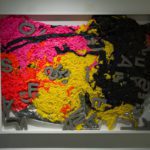

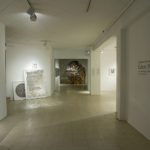



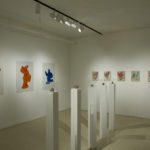

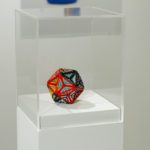
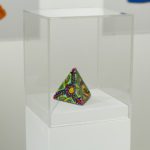
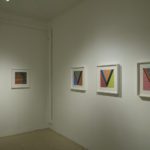



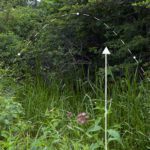

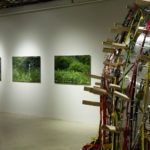
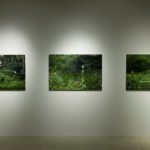
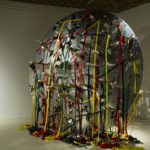
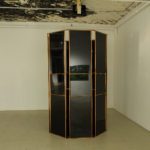

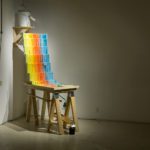


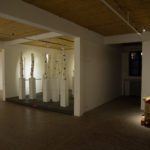
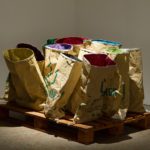
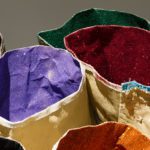





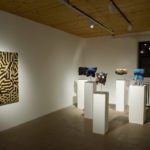



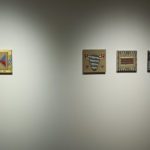

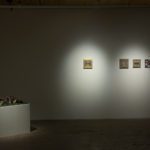
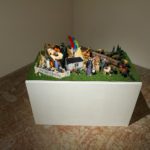
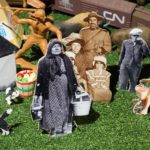
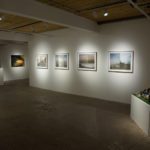
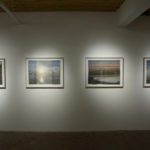
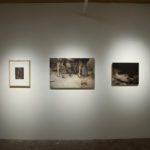

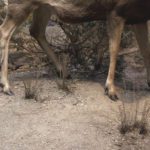




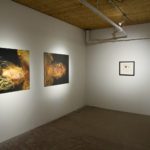
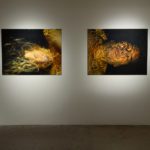

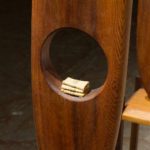






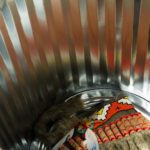
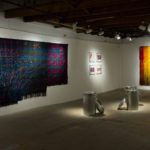
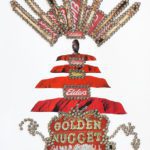
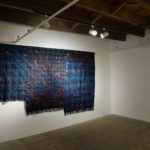
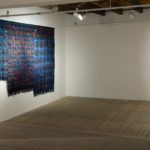

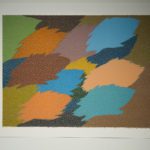
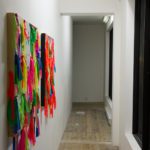
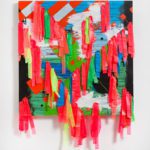


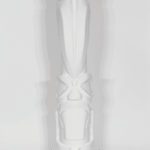


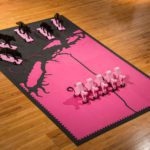

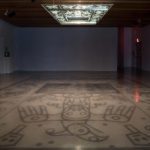
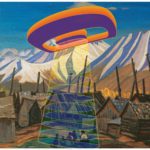





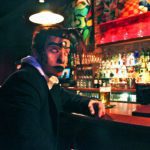

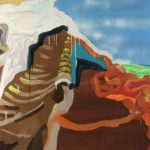

![Ningeokuluk Teevee, Augijuqtaq [Robe / Dress], 2006](https://artmur.com/wp-content/uploads/48-Culture-Shift-150x150.jpg)
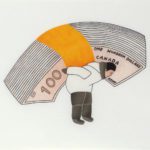

![Ohotaq Mikkigak, Qamutaujaq [Motoneige / Snowmobile], 2006](https://artmur.com/wp-content/uploads/50-Culture-Shift-150x150.jpg)
